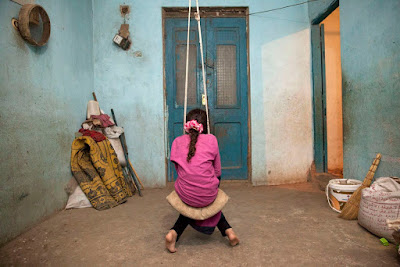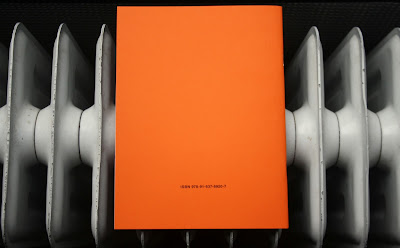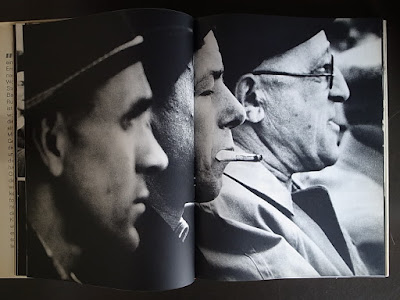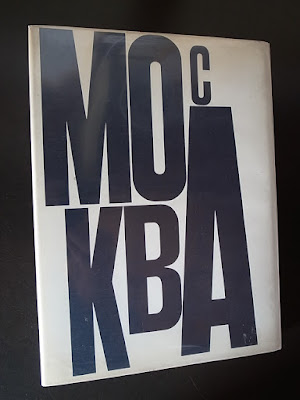BIEKE DEPOORTER
See also
CouchSurfing in Siberia OU MENYA Bieke Depoorter Winner 2009 Magnum Expression Award Photography
As it may be
Now until Jan-14-2018
Magnum photographer Bieke Depoorter has visited Egypt regularly since 2011. She first went there during the Arab Spring. Travelling through the country, Depoorter set out to explore the downside of the uprising. During this time of great uncertainty and mistrust, each day she would look for a new place to spend the night, preferably with a family in their home. Looking beyond the news and the politics, she searched for the intimate moments that often happen at home. From 21 October The Hague Museum of Photography will be showing an exhibition of the resulting work, for which Depoorter was awarded the prestigious Prix Levallois earlier this year.
Though Bieke Depoorter was greeted hospitably, initially she was never invited in. She sensed that people wished to protect their privacy, and felt it would be impossible to gain people’s trust. But it was precisely the impossibility of the task that attracted her. Her quest for trust was the start of a long journey. An encounter would often begin with a cup of tea and lots of sugar, an invitation from a woman cooling off on her front of doorstep in the evening. Visitors would be given a bed in the guest room, where the chairs have gold legs and Chinese teacups unused since the wedding party stand in the cabinet. The dividing line between private and public is a white lace curtain in the visitor’s room. Beyond that, a pan of lentils stands on the stove, hair is plaited and a school uniform hangs on a hook.
Return to Egypt
Through her efforts to connect with people, Depoorter gradually became aware of her own perspective and position as an outsider, both culturally and as a photographer. In 2017, therefore, she decided to return to Egypt with the first version of her new book, to talk to the people about the photographs she had taken back. People from all over the country who happened to be passing by wrote their thoughts and ideas on the photos, as if they were putting subtitles to a silent film. This created a fascinating multi-layered conversation between people who might otherwise never speak to each other. This new layer breaks through our western view, puncturing the vacuum in which the images seem to exist. Depoorter will present these results alongside the original photographs at The Hague Museum of Photography.
About the artist
Bieke Depoorter (b. 1986, Kortrijk, Belgium) graduated from KASK in Ghent in 2009. In that same year she was nominated at The Hague Museum of Photography for the Photo Academy Award, for her graduation series Ou Menya. In 2012 she became a nominee for the renowned Magnum photographers’ collective, becoming a full member in 2016. Her photographs record extraordinary encounters in painterly, often filmic images. She has previously published photobooks entitled Ou Menya, with pictures from Russia, and I Am About to Call It a Day, documenting her travels round America. While working on these three projects, Bieke Depoorter would look for a new place to sleep every day. Her route would be decided by a series of chance encounters, driven by wonder.
Publication
To coincide with the exhibition, Hannibal will be publishing the Dutch edition of As It May Be / Mumkin (ISBN 978 94 9267 717 4; €57.50). The English edition will be published by Aperture (New York) and the French edition by Edition Xavier Barral (Paris).
In de slaapkamers van Egypte
De Belgische fotograaf Bieke Depoorter wist toegang te krijgen tot Egyptische slaapkamers. Op straat vroeg ze Egyptenaren om hun commentaar op haar beelden.
Rianne van Dijck
26 oktober 2017
Egyptenaren schreven hun commentaar op de foto’s van Bieke Depoorter.
Foto Bieke Depoorter/Magnum Photos.
Fotografie
Bieke Depoorter: As it May Be / Mumkin. T/m 14 januari in Fotomuseum Den Haag
●●●●●
‘Ik denk dat je maar beter helemaal opnieuw begint met het boek. Neem foto’s die iets duidelijk maken en iets zeggen over de Egyptische beschaving.” Het is een van de teksten die we lezen in het fotoboek van de Belgische Bieke Depoorter (1986), waarin ze aan willekeurige Egyptenaren vroeg of ze iets wilden schrijven op foto’s die zij in hun land had gemaakt. Depoorter, sinds 2016 een van de jongste leden van fotoagentschap Magnum, reisde sinds 2011 meerdere malen naar Egypte. Daar vroeg ze, zoals ze dat eerder deed in Rusland en de Verenigde Staten, aan mensen op straat of ze een nachtje bij hen mocht blijven slapen en in de avond een foto van hen mocht maken. Geen makkelijke opgave in een land dat wantrouwend staat tegenover buitenlanders en waar vooral vrouwen hun privéleven liever afschermen. Lastig ook omdat Depoorter de taal niet spreekt en ze na de eerste kennismaking – waarbij ze werd geholpen door haar Arabisch sprekende gids, de Belgische journalist Ruth Vandewalle – in haar eentje bij de families achterbleef. Mumkin sura? Die woorden kende ze. Mag ik een foto nemen?
De beelden die ze maakte in de intimiteit van de avond en de nacht, op het moment net voordat mensen gaan slapen, leveren sprookjesachtige taferelen op van vaak gesluierde moeders en hun kinderen (op slechts een paar foto’s staat een man). Zo is er een feestelijk beeld van een meisje dat vanuit haar bonte bed verrukt kijkt naar een duif die per ongeluk de kamer binnenvliegt, zien we moeders die hun kinderen liefdevol toedekken of die in gewijd avondlicht een laatste gebed bidden. Depoorter creëerde zo met een spel van licht en donker schilderachtige beelden. In de tentoonstelling As it May Be wordt dat schilderachtige nog eens benadrukt door een aantal grote foto’s in een lichtbak te exposeren, waardoor de intense kleuren van het scherm spatten.
Naast tien grote prints zijn in vitrines alle originele pagina’s te zien van de dummy van As it May Be waarop de Arabisch teksten werden geschreven. Dat levert op zich al een spannend grafisch beeld op: die witte en zwarte letters op al die bonte kleuren. In de Nederlandse vertalingen lezen we dat er kritiek is op haar fotografie (‘Deze foto is onduidelijk’) alsook kritiek op de politiek van het land (‘Het is gevaarlijk de straat op te gaan en je rechten op te eisen’), over de religie (‘Je mag deze foto niet publiceren; in de islam mag je geen naaktheid tonen’) en de positie van de vrouw.
Depoorter is niet de eerste fotograaf die een extra laag in haar werk aanbrengt door het toevoegen van tekst. De Amerikaan Duane Michals duwde al tegen de grenzen van de fotografie door naast zijn foto’s zaken te noteren die niet zichtbaar waren in het beeld. Magnum-fotograaf Jim Goldberg vroeg de geportretteerden commentaar te geven op hun eigen foto’s. Die nieuwe dimensie leidt het oog van de kijker, doet hem nieuwe dingen zien en andere verbanden leggen. En maakt tegelijkertijd duidelijk hoe beperkt een foto eigenlijk is als informatiedrager.
Door terug te gaan naar Egypte voegt Depoorter niet alleen meer informatie toe, maar maakt ze ook de serie minder afstandelijk en haar betrokkenheid groter. Al blijft ze, met alle goede bedoelingen, voor de meesten nog steeds een buitenstaander: ‘Het leven op die foto heb je niet geleefd.’






































































